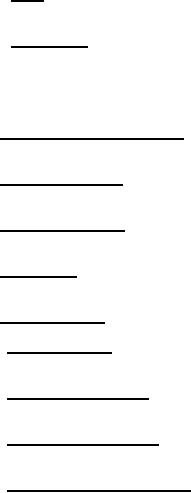 |
|||
|
|
|||
| ||||||||||
|
|  MIL-C-11272D
w/Amendment 1
3.4.2 Case. Each capacitor shall be enclosed in a glass, porcelain, or epoxy case that will protect the capacitor
element from the effects of prolonged exposure to high humidity under all the test conditions specified herein.
3.4.3 Connections. Electrical connections shall not depend upon the terminals being clamped between a metallic
member and an insulating material other than the glass material. Such connections shall be securely made,
mechanically and electrically, with the capacitor element by soldering, welding, or mechanical means, in such a
manner that the normal movements of the terminal leads will not result in strain, wear, or damage to the capacitor
element, case, or coating.
3.5 Dielectric withstanding voltage. Capacitors shall withstand the direct current (dc) potential specified in 4.6.2
without damage, arcing, or breakdown.
3.6 Barometric pressure. Capacitors shall withstand the dc potential specified in 4.6.3 without damage, arcing, or
breakdown.
3.7 Insulation resistance. When measured as specified in 4.6.4, the insulation resistance shall exceed 100,000
megohms.
3.8 Capacitance. When measured as specified in 4.6.5, the capacitance shall be within the tolerance shown in
the type designation (see 3.1).
3.9 Dissipation factor. When measured as specified in 4.6.6, the dissipation factor shall be not more than 0.001.
3.10 Quality factor (Q). When measured as specified in 4.6.7, the Q shall be not less than the value shown on
figure 1, unless otherwise specified (see 3.1).
3.11 Shock (specified pulse). When capacitors are tested as specified in 4.6.8, there shall be no intermittent
contacts, open- or short-circuiting, nor evidence of arcing or mechanical damage.
3.12 Vibration, high frequency. When capacitors are tested as specified in 4.6.9, there shall be no intermittent
contacts, open- or short-circuiting, nor evidence of mechanical damage.
3.13 Thermal shock and immersion. When tested as specified in 4.6.10, capacitors shall meet the following
requirements:
a.
Visual examination - There shall be no evidence of corrosion or mechanical damage that will affect life or
serviceability.
b.
Dielectric withstanding voltage - There shall be no evidence of damage, arcing, or breakdown.
c.
Insulation resistance - Not less than 100,000 megohms.
d.
Capacitance - Change not more than 0.5 percent of the nominal value or 0.5 pF, whichever is greater, from
the initial value obtained when measured as specified in 4.6.5.
e.
Dissipation factor - Not to exceed 0.001.
4
|
|
Privacy Statement - Press Release - Copyright Information. - Contact Us |